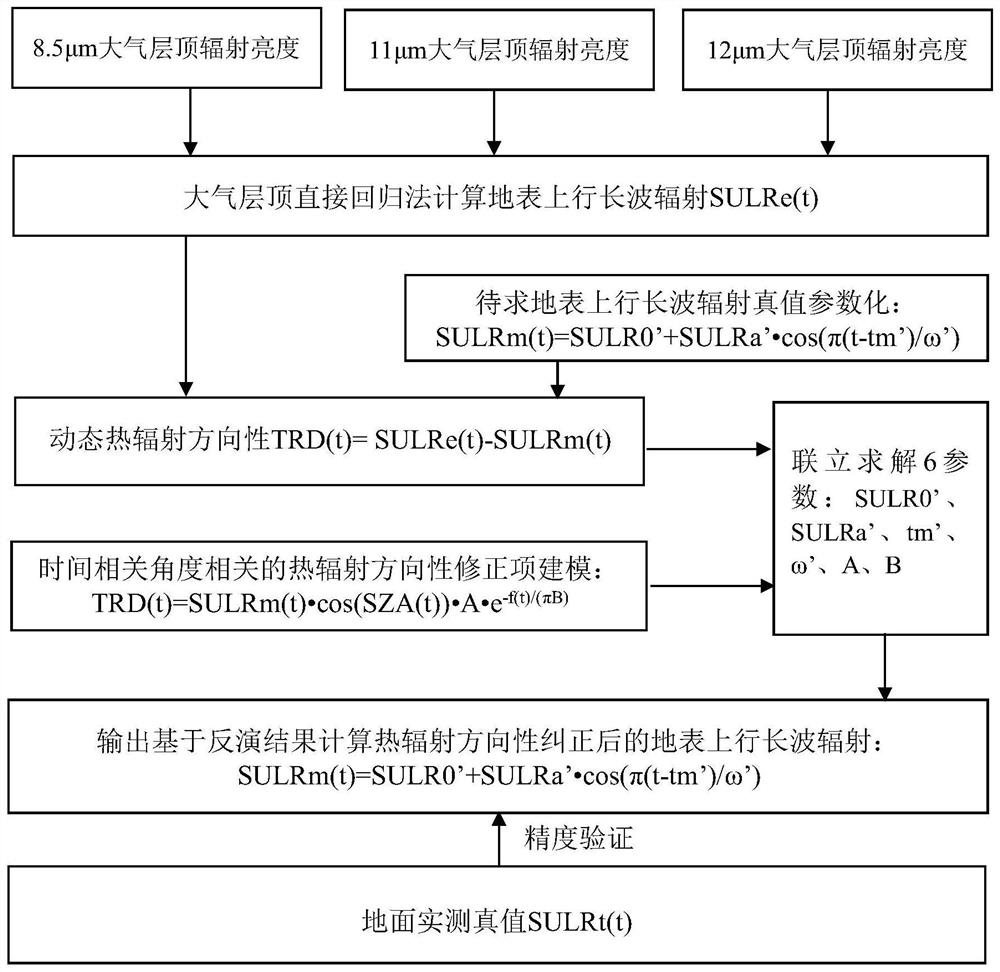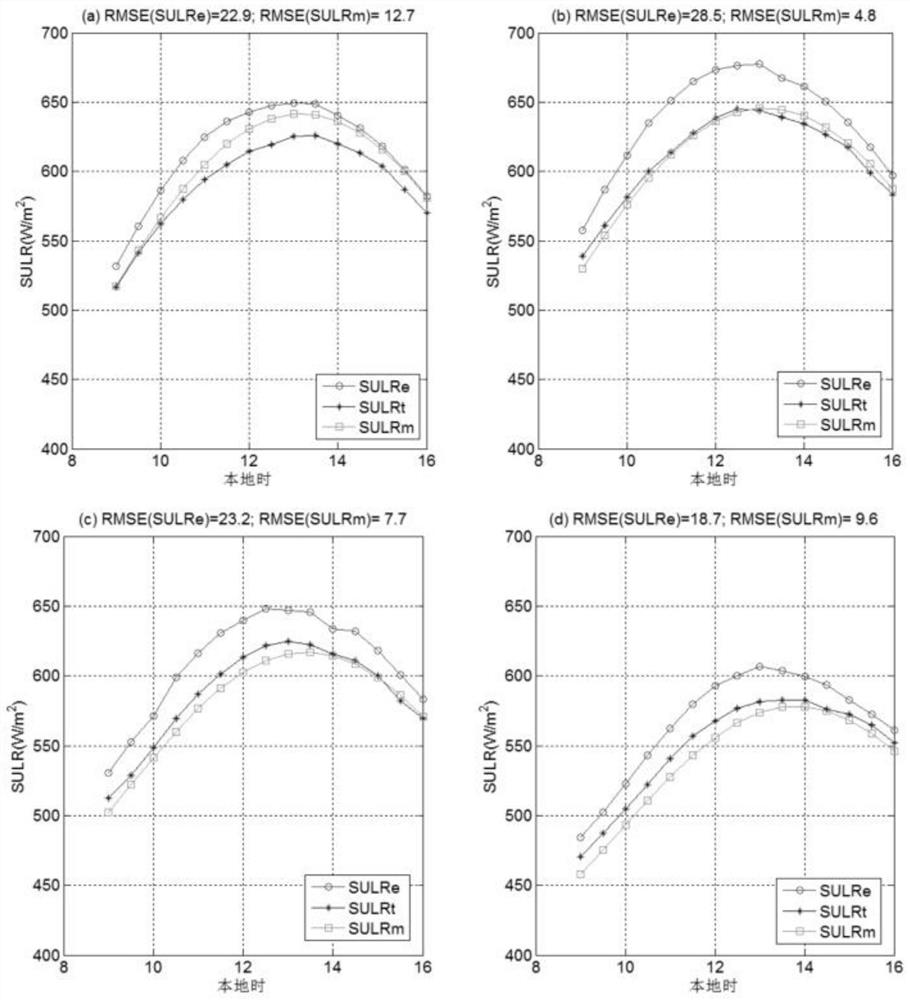A method of correcting the thermal radiation directionality of geostationary satellite's upgoing long-wave radiation products
A technology of long-wave radiation and geostationary satellites, applied in the field of space information, can solve problems such as lack of space, achieve dynamic correction, both accuracy and simplicity, and improve the effect of estimation accuracy
- Summary
- Abstract
- Description
- Claims
- Application Information
AI Technical Summary
Problems solved by technology
Method used
Image
Examples
Embodiment 1
[0089] GOES-16 is the first star of the new generation of GOES-R series geostationary satellites in the United States. It was launched in 2016 and released data in 2017. The main load ABI carried by it can realize the observation of the earth once every 15 minutes. The central wavelengths of the 11th, 14th and 15th bands are 8.5, 11.2 and 12.3 μm. Using the radiance of the top of the atmosphere of these three characteristic channels can directly estimate the surface The initial value of SULRe for uplink longwave radiation. The method proposed by the present invention can be further estimated to obtain the result SULRm after the thermal radiation directionality correction, and the accuracy of SULRm can be directly verified by using the measured data SULRt of the American Flux AmeriFlux site to test the efficacy of the present invention. For specific implementation methods, see figure 1 .
[0090] figure 2 The results of directly estimating SULRe using the ABI top-of-atmosphe...
PUM
 Login to View More
Login to View More Abstract
Description
Claims
Application Information
 Login to View More
Login to View More - R&D
- Intellectual Property
- Life Sciences
- Materials
- Tech Scout
- Unparalleled Data Quality
- Higher Quality Content
- 60% Fewer Hallucinations
Browse by: Latest US Patents, China's latest patents, Technical Efficacy Thesaurus, Application Domain, Technology Topic, Popular Technical Reports.
© 2025 PatSnap. All rights reserved.Legal|Privacy policy|Modern Slavery Act Transparency Statement|Sitemap|About US| Contact US: help@patsnap.com



